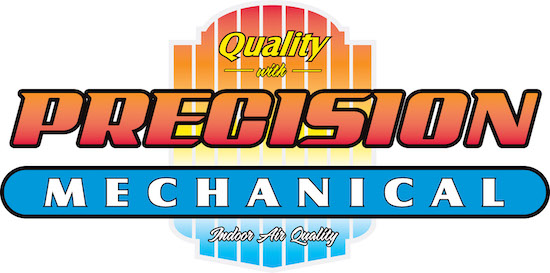
A furnace is usually a background player at home, helping keep you warm across the cold winter months. It frequently won't be noticed until something goes wrong.
One source could be that your furnace has a cracked heat exchanger. It’s a potentially dangerous issue, so it’s important to learn the signs of a cracked heat exchanger and what you should do if you suspect that may be the problem.
What Is a Heat Exchanger in a Furnace?
A heat exchanger helps transition heat from the combustion chamber of your furnace to the air that moves inside the system. It usually handles this using coils or tubes that heat the air while serving as a barrier to keep the gasses created in the combustion chamber, called flue gasses, from leaking out into your home.
Is a Cracked Heat Exchanger Dangerous?
Given its central role, it isn't surprising that a damaged heat exchanger can pose a risk. A crack in the heat exchanger can allow dangerous gasses – including carbon monoxide, which can be lethal – to circulate throughout your home.
For that reason, never run your heater if you think it has a cracked heat exchanger, as letting it run could make your entire family sick. Reach out to an HVAC professional as soon as possible if you believe your furnace has a cracked heat exchanger that needs to be repaired.
Four Warning Signs of a Cracked Heat Exchanger:
- Furnace turns off: A cracked heat exchanger may cause your furnace to turn off.
- Strange Smells: If the air escaping your furnace has an intense chemical scent, it could be an indicator that gasses are leaking through cracks in your heat exchanger. These gasses, which will often smell like formaldehyde, are a common warning sign.
- Carbon monoxide alarm goes off or you notice poisoning symptoms: If a cracked heat exchanger is relieving carbon monoxide in your home, your carbon monoxide alarm should go off or family members may struggle with signs of carbon monoxide poisoning. Symptoms include headaches, dizziness, weakness, nausea, vomiting or feeling sleepy. If your alarm goes off or you feel unusually tired, exit the home right away and then call for help.
- Soot: If you find black sooty buildup around the exterior of your furnace, it’s an indication something might be seriously wrong.
What You Should Do if the Furnace Heat Exchanger is Cracked
If you worry your furnace has a cracked heat exchanger, call a professional with extensive experience in furnace installation Rapid City as soon as possible so they can inspect your system and, if needed, start a furnace heat exchanger replacement. Costs will vary depending on the situation, but estimates can roughly suggest $1,000 to $3,000.
Estimates aside, the good news is that heat exchangers are often covered by the warranty. You’ll want to check the warranty paperwork on your furnace, because while the warranty might not cover the entire cost of repairs, it can significantly lower your bill.
How to Avoid a Cracked Heat Exchanger in Your Home
One of the best ways to minimize the risk of problems in your furnace overall is via routine furnace maintenance. Furnaces offer the most benefits when they work efficiently. Contacting a trained professional to examine your furnace for broken-down parts, clogged filters and other likely problems can help you avoid getting a big bill later on.
It’s also beneficial to inspect your furnace filters every few months – it’s encouraged some filters be changed every 90 days or sooner if they are dirty or grimy. While the filters aren't connected to the heat exchanger itself, the strain of pulling air through a clogged filter makes the entire furnace work more vigorously to complete its job. And the harder your furnace works, the more wear and tear components like the heat exchanger will experience.













